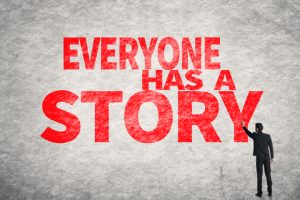Telling Your Story
I just spent a few days last week visiting a client and getting to know more about their people, history and culture. One of the senior partners made an interesting statement to me. He said, “Working with a client on their financial statement is like helping them tell their story.” That comment strongly resonated with me since we were there to help them tell their story.
I am always happy to hear when accounting professionals understand the importance of delivering a message interested stakeholders—whether it’s clients, potential clients, referral sources or employees.
The key to good storytelling is speaking in terms that your audience will understand. For your clients, sharing the story through numbers makes sense for their audience, which often includes banks, lenders and investors, and potential buyers and sellers. For accountants, your audience wants to hear your story in business language: how to build their business or plan for the future. 
As you think about the language for your story, here are some guidelines that you might find helpful.
Describing What You Do
Yes, you “do” accounting and tax. But what is it that you really do on a daily basis? Often, to describe what you truly do, the best option is to share concise, relatable examples. Talk about the time you helped a business owner to structure an acquisition deal in order to minimize the tax implications. Share the story of the CFO who sought your assistance in decreasing the time it took to close monthly books. Perhaps you helped a family-business owner plan for the next generation. These are examples any business-minded person can relate to and even pass along to others who might be interested.
Explaining Why Do You Do It
Whatever reason you had for choosing accounting as a profession, your reasons for staying in accounting have probably evolved. Often, this is driven by a strong belief in helping people, being a champion for the small-business owner or building a firm where people like coming to work. As you explain the “why” behind what you do, you want to elicit an emotional response such as relief or excitement because your beliefs connect with what your audience is experiencing in their business or work environment.
Identifying Who Do You Do it For
When describing the types of clients you help or the types of people you want to hire, you want the audience to either visualize themselves or someone they know in the story. Try to be as specific as possible when describing people involved in your client examples or in your beliefs. You might talk about people like “a second-generation owner of a family business,” “an entrepreneur,” or “a CFO for a startup.” Think about the role the person in front of you plays and use the example that he or she can best relate to.
The ultimate goal of telling your story—the what, why and who—should be to help your audience connect with you on an intellectual, emotional and personal level. People do business with people, not companies, and adding a personal touch to your story can help you stand apart from the competition. Listening to other firm’s stories or turning to outside resources can help you craft and deliver your story.